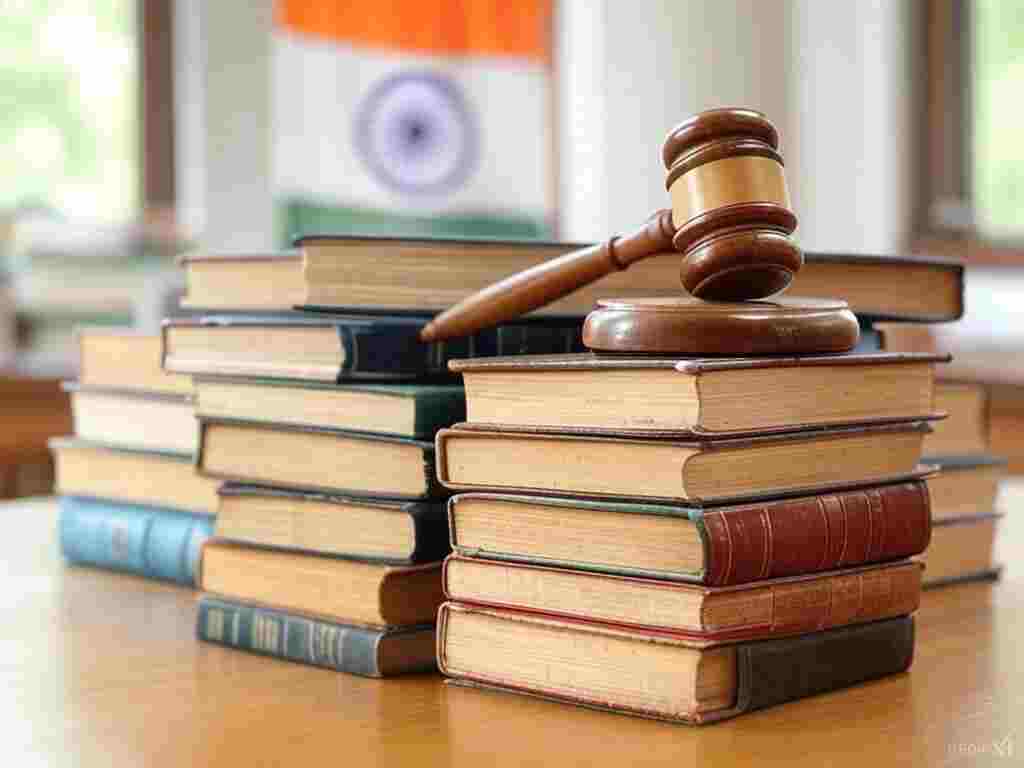Table of Contents
- Introduction
- 1. Appeal
- 2. Review
- 3. Revision
- Distinctions Highlighted in Case Laws
- How to Decide Whether to File Appeal, Review, or Revision
- Key Differences Between Appeal, Review, and Revision
- Conclusion
Introduction
The legal remedies of appeal, review, and revision play a crucial role in ensuring justice in the Indian legal system. Each of these remedies serves a distinct purpose and is governed by specific provisions of law. This article explains their meanings, purposes, and applicability, along with significant case laws that clarify their differences.
1. Appeal
Definition
An appeal is a legal remedy that allows a higher court to re-examine the decision of a lower court. It involves a broader reassessment of both facts and law to ensure justice.
Purpose
- To correct errors in fact, law, or procedure.
- To seek a complete re-hearing of the case.
Scope
- Broad: The appellate court can reconsider the entire case, including evidence, findings of fact, and legal interpretations.
When to File
- If there is dissatisfaction with the judgment of a lower court.
- If the statute provides a specific right of appeal.
Examples
- A party challenges a conviction by a Sessions Court in the High Court.
- A plaintiff appeals a decree issued by a civil court to the District Court.
Key Case Laws
-
Natarajan v. Neelakandan (1976)
- Court: Supreme Court of India
- Principle: The appellate court has the jurisdiction to reconsider both factual and legal aspects of the case, provided the appeal is maintainable under the law.
- Key Takeaway: Appeals allow for a full re-hearing of the case, including evidence and legal interpretations.
-
Municipal Corporation of Delhi v. Gurnam Kaur (1989)
- Court: Supreme Court of India
- Principle: The right to appeal is a statutory right. If the statute does not provide for an appeal, it cannot be claimed as a matter of right.
- Key Takeaway: Appeals are subject to the provisions of the applicable law, and their scope depends on the statute.
-
UOI v. Ibrahim Uddin (2012)
- Court: Supreme Court of India
- Principle: In an appeal, the appellate court can entertain additional evidence only in exceptional circumstances and as per the procedure laid down in law.
- Key Takeaway: Appeals are subject to rules governing the inclusion of additional evidence.
2. Review
Definition
A review refers to the reconsideration of a judgment by the same court that delivered it. The scope is narrow, limited to correcting errors apparent on the face of the record.
- Certificate Course in Labour Laws
- Certificate Course in Drafting of Pleadings
- Certificate Programme in Train The Trainer (TTT) PoSH
- Certificate course in Contract Drafting
- Certificate Course in HRM (Human Resource Management)
- Online Certificate course on RTI (English/हिंदी)
- Guide to setup Startup in India
- HR Analytics Certification Course
Purpose
- To rectify self-evident errors in judgment.
- To consider new evidence that was unavailable earlier despite due diligence.
- To address violations of natural justice.
Scope
- Limited: Does not involve re-hearing or re-assessment of evidence.
When to File
- If there is an error apparent on the face of the record.
- If new evidence has been discovered.
- If natural justice was violated.
Examples
- A party points out a factual error in a court’s decision that changes the outcome of the case.
- Overlooking key legal precedents in delivering the judgment.
Key Case Laws
-
Lily Thomas v. Union of India (2000)
- Court: Supreme Court of India
- Principle: A review cannot be an avenue for re-arguing the same case. It is confined to errors apparent on the face of the record.
- Key Takeaway: The scope of review is limited and does not allow a complete re-hearing.
-
Sow Chandra Kante v. Sheikh Habib (1975)
- Court: Supreme Court of India
- Principle: “Error apparent on the face of the record” must be such that no detailed reasoning or analysis is required to establish it.
- Key Takeaway: A review petition cannot substitute for an appeal and must focus on self-evident errors.
-
Rupa Ashok Hurra v. Ashok Hurra (2002)
- Court: Supreme Court of India
- Principle: Introduced the concept of curative petitions for cases where review is inadequate, and justice still demands intervention.
- Key Takeaway: A review is a narrow remedy, and curative petitions provide an additional layer in extraordinary circumstances.
3. Revision
Definition
A revision is a process where a higher court examines the correctness, legality, or propriety of a subordinate court’s decision. It does not involve a re-hearing of the case but ensures procedural and jurisdictional correctness.
Purpose
- To address jurisdictional errors.
- To correct procedural irregularities or material irregularities in a judgment.
- To prevent miscarriage of justice when no appeal is available.
Scope
- Narrow: Focuses on procedural and jurisdictional aspects, not re-evaluation of facts or evidence.
When to File
- If the lower court acted without jurisdiction or failed to exercise its jurisdiction.
- If there were serious procedural irregularities.
- If no appeal lies against the order or judgment.
Examples
- A Magistrate passes an order without jurisdiction.
- A lower court’s decision is challenged due to procedural violations.
Key Case Laws
-
Amit Kapoor v. Ramesh Chander (2012)
- Court: Supreme Court of India
- Principle: The revisional power under Section 397 of the CrPC should be exercised only when there is a patent error of law or jurisdiction, or gross miscarriage of justice.
- Key Takeaway: Revision is limited to correcting jurisdictional or procedural errors, not re-examining evidence.
-
Hindustan Petroleum Corporation Ltd. v. Dilbahar Singh (2014)
- Court: Supreme Court of India
- Principle: In civil cases, the scope of revision under Section 115 CPC is limited to determining whether the subordinate court acted within its jurisdiction and followed proper procedures.
- Key Takeaway: Revision does not allow re-appreciation of facts but focuses on jurisdiction and procedural propriety.
Distinctions Highlighted in Case Laws
-
Appeal vs. Review:
- Gurnam Kaur (1989): Appeal is broader and re-hears the case, while review is limited to errors on the record (Lily Thomas v. Union of India, 2000).
-
Appeal vs. Revision:
- Amit Kapoor v. Ramesh Chander (2012): Appeal involves re-evaluation of facts and law, while revision focuses only on jurisdiction and procedure.
-
Review vs. Revision:
- Sow Chandra Kante (1975): Review focuses on correcting self-evident errors; Hindustan Petroleum Corporation Ltd. (2014) explains that revision ensures procedural correctness.
How to Decide Whether to File Appeal, Review, or Revision
-
Identify the Issue:
- Factual and legal errors: Appeal.
- Errors apparent on the record: Review.
- Jurisdictional or procedural errors: Revision.
-
Check Availability of Remedy:
- Determine if an appeal is provided under the law.
- If appeal is barred, check for revision or review.
-
Consider the Scope:
- Broad re-hearing required: Appeal.
- Narrow correction of self-evident errors: Review.
- Procedural or jurisdictional correction: Revision.
-
Assess Time Limits:
- Appeals: 30-90 days (varies by case type).
- Reviews: 30 days (under most statutes).
- Revisions: Case-specific and prompt.
Key Differences Between Appeal, Review, and Revision
| Aspect | Appeal | Review | Revision |
|---|---|---|---|
| Purpose | Reconsideration of the entire case. | Correction of an error by the same court. | Correction of jurisdictional or procedural errors. |
| Scope | Broad; includes facts and evidence. | Narrow; limited to errors on the record. | Limited; focuses on legality and propriety. |
| Examples | Appeal to High Court. | Review of a judgment. | Revision of a Magistrate’s order. |
Conclusion
The remedies of appeal, review, and revision are vital tools to ensure justice in the Indian legal system. While an appeal allows for a complete reassessment, a review focuses on rectifying self-evident errors, and a revision ensures procedural and jurisdictional correctness. Each remedy has distinct purposes and should be chosen based on the specific circumstances of the case.
- Certificate Course in Labour Laws
- Certificate Course in Drafting of Pleadings
- Certificate Programme in Train The Trainer (TTT) PoSH
- Certificate course in Contract Drafting
- Certificate Course in HRM (Human Resource Management)
- Online Certificate course on RTI (English/हिंदी)
- Guide to setup Startup in India
- HR Analytics Certification Course
- Certificate Course in Labour Laws
- Certificate Course in Drafting of Pleadings
- Certificate Programme in Train The Trainer (TTT) PoSH
- Certificate course in Contract Drafting
- Certificate Course in HRM (Human Resource Management)
- Online Certificate course on RTI (English/हिंदी)
- Guide to setup Startup in India
- HR Analytics Certification Course

